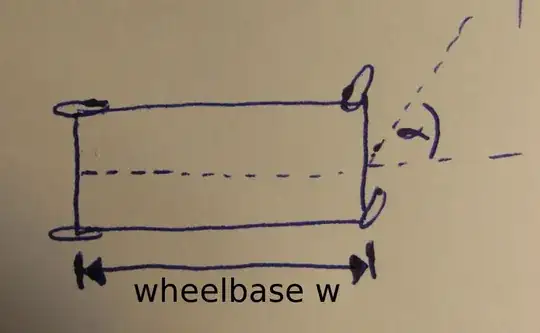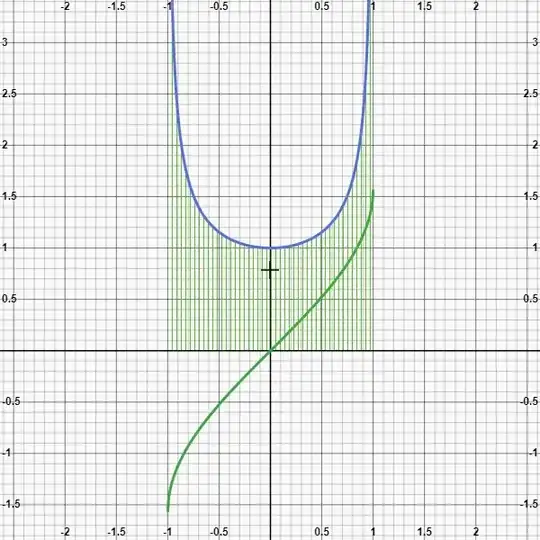On Math SE, I've seen several questions which relate to the following. By abusing the laws of exponents for rational exponents, one can come up with any number of apparent paradoxes, in which a number seems to be shown as equal to its opposite (negative). Possibly the most concise example:
$-1 = (-1)^1 = (-1)^\frac{2}{2} = (-1)^{2 \cdot \frac{1}{2}} = ((-1)^2)^\frac{1}{2} = (1)^\frac{1}{2} = \sqrt{1} = 1$
Of the seven equalities in this statement, I'm embarrassed to say that I'm not totally sure which one is incorrect. Restricting the discussion to real numbers and rational exponents, we can look at some college algebra/precalculus books and find definitions like the following (here, Ratti & McWaters, Precalculus: a right triangle approach, section P.6):
The thing that looks the most suspect in my example above is the 4th equality, $(-1)^{2 \cdot \frac{1}{2}} = ((-1)^2)^\frac{1}{2}$, which seems to violate the spirit of Ratti's definition of rational exponents ("no common factors")... but technically, that translation from rational exponent to radical expression was not used at this point. Rather, we're still only manipulating rational exponents, which seems fully compliant with Ratti's 2nd property: $(a^r)^s = a^{rs}$, where indeed "all of the expressions used are defined". The rational-exponent-to-radical-expression switch (via the rational exponent definition) doesn't actually happen until the 6th equality, $(1)^\frac{1}{2} = \sqrt{1}$, and that seems to undeniably be a true statement. So I'm a bit stumped at exactly where the falsehood lies.
We can find effectively identical definitions in other books. For example, in Sullivan's College Algebra, his definition is (sec. R.8): "If $a$ is a real number and $m$ and $n$ are integers containing no common factors, with $n \ge 2$, then: $a^\frac{m}{n} = \sqrt[n]{a^m} = (\sqrt[n]{a})^m$, provided that $\sqrt[n]{a}$ exists"; and he briefly states that "the Laws of Exponents hold for rational exponents", but all examples are restricted to positive variables only. OpenStax College Algebra does the same (sec. 1.3): "In these cases, the exponent must be a fraction in lowest terms... All of the properties of exponents that we learned for integer exponents also hold for rational exponents."
So what exactly are the restrictions on the Laws of Exponents in the real-number context, with rational exponents? As one example, is there a reason missing from the texts above why $(-1)^{2 \cdot \frac{1}{2}} = ((-1)^2)^\frac{1}{2}$ is a false statement, or is it one of the other equalities that fails?
Edit: Some literature that discusses this issue:
Goel, Sudhir K., and Michael S. Robillard. "The Equation: $-2 = (-8)^\frac{1}{3} = (-8)^\frac{2}{6} = [(-8)^2]^\frac{1}{6} = 2$." Educational Studies in Mathematics 33.3 (1997): 319-320.
Tirosh, Dina, and Ruhama Even. "To define or not to define: The case of $(-8)^\frac{1}{3}$." Educational Studies in Mathematics 33.3 (1997): 321-330.
Choi, Younggi, and Jonghoon Do. "Equality Involved in 0.999... and $(-8)^\frac{1}{3}$" For the Learning of Mathematics 25.3 (2005): 13-36.
Woo, Jeongho, and Jaehoon Yim. "Revisiting 0.999... and $(-8)^\frac{1}{3}$ in School Mathematics from the Perspective of the Algebraic Permanence Principle." For the Learning of Mathematics 28.2 (2008): 11-16.
Gómez, Bernardo, and Carmen Buhlea. "The ambiguity of the sign √." Proceedings of the Sixth Congress of the European Society for Research in Mathematics Education. 2009.
Gómez, Bernardo. "Historical conflicts and subtleties with the √ sign in textbooks." 6th European Summer University on the History and Epistemology in Mathematics Education. HPM: Vienna University of Technology, Vienna, Austria (2010).


